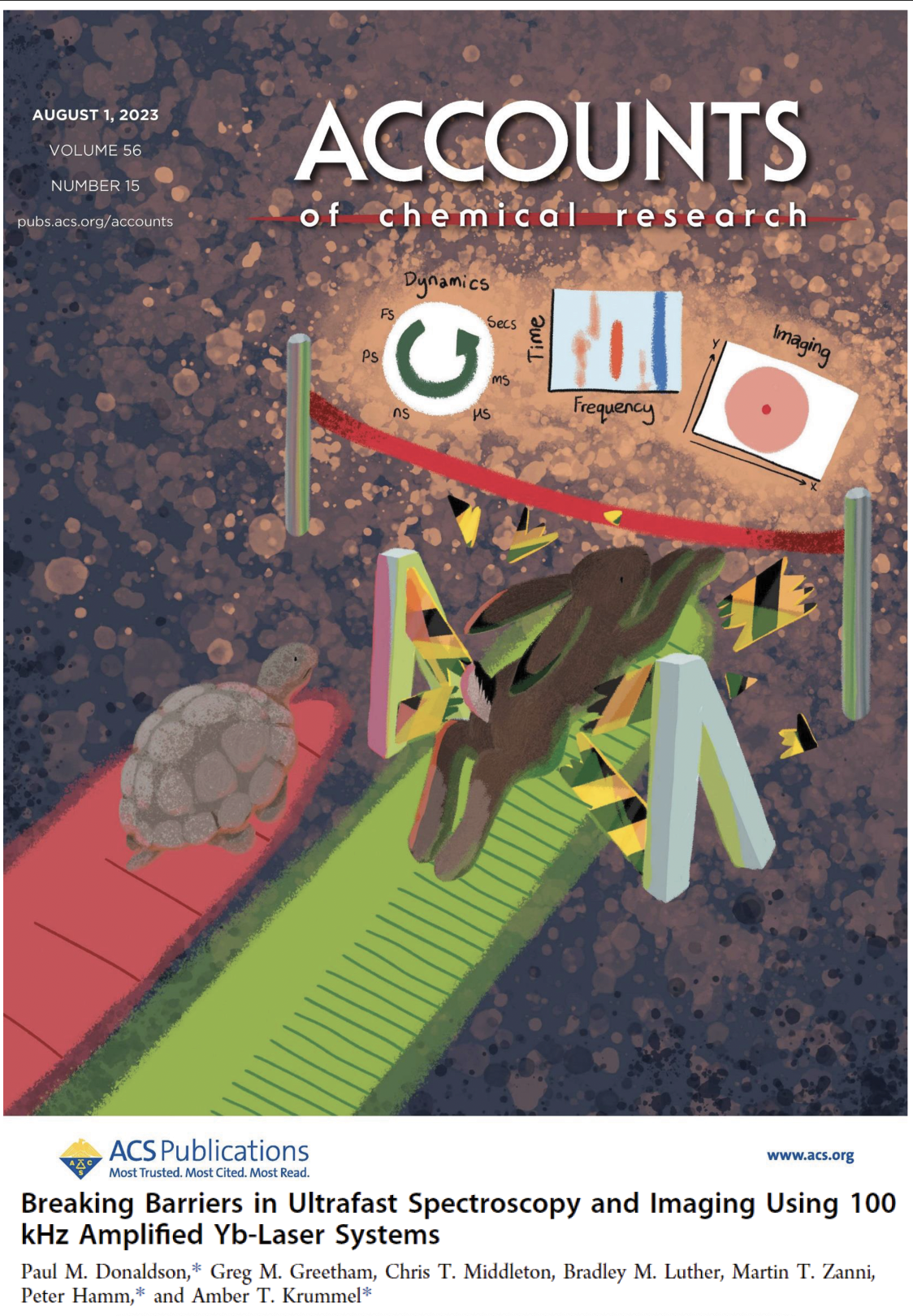 Many of the things we study in order to advance science – from the chemical reactions that happen during photosynthesis, to the intricate motions of liquid water molecules – happen incredibly quickly.
Many of the things we study in order to advance science – from the chemical reactions that happen during photosynthesis, to the intricate motions of liquid water molecules – happen incredibly quickly.
Scientists began studying such rapid processes using a range of techniques falling under the name 'ultrafast spectroscopy' in the 1970's, allowing us to finally observe fast-acting processes at the molecular scale just like a slow-motion movie. This leap became possible when lasers began to make pulses of light short enough to trigger and observe the fastest of processes in chemistry – approaching a millionth of a billionth of a second. The difficulty of making such laser light has, over the following decades, made ultrafast spectroscopy a highly specialised laboratory activity.
Nowadays, ultrafast lasers have in fact made their way beyond the lab and into the hands of industry, where they are used to precisely zap and burn materials to perform medical surgeries, make microchips, medical implants and other accurately engineered products. Yet, for the molecular world, advanced, state-of-the-art ultrafast spectroscopy techniques relying on complex scientific lasers remain the core for much fundamental, boundary-pushing scientific research. The CLF's Ultra laser facility – as its name suggests – is a laser lab capable of just this type of research.
A significant improvement in industrial laser performance was gained when Ytterbium (Yb) lasers appeared, making them smaller and powerful, reliable and efficient. Around ten years ago, inspired by these innovations, the CLF Ultra facility dared to build a new, advanced ultrafast spectroscopy facility entirely based on these new industrial Yb lasers. Named 'LIFEtime', the facility is one of a kind, and world leading on speed, data quality, stability and ease-of-use. LIFEtime can create movies of chemical processes ranging anywhere from picoseconds to seconds – twelve orders of magnitude in time – across the cascades of timescales used by nature.
To explain the impact that Yb-based instruments like LIFEtime are having on ultrafast spectroscopy and imaging, CLF scientists Paul Donaldson and Greg Greetham teamed up with other top ultrafast spectroscopy labs worldwide. By using industrial Yb-based laser systems, this team of scientists have collectively pushed boundaries in many aspects of ultrafast spectroscopy and imaging. These achievements are described in their article published in the journal Accounts of Chemical Research.
As first and co-corresponding author, Paul produced a unique graphical abstract, the theme of which was rendered as a front cover for the article by the CLF's Impact and Engagement officer, Helen Towrie.
Paul is a UKRI Future Leaders Fellow, focussing his team's research on developing new ultrafast spectroscopy techniques for studying the complex - and often elusive - chemistry of catalysts, batteries and fuel cells. Greg is group leader of the CLF-Ultra facility, which is one of the UK's leading national laboratories for ultrafast spectroscopy. Featured within the paper is a selection of the many experiments conducted by users on LIFEtime.
Alongside several of the world's leading Ultrafast Spectroscopists, Paul and Greg's involvement in this paper is testimony to Ultra's unique status as a highly successful, innovative, internationally leading centre for ultrafast spectroscopy.
Read the Accounts of Chemical Research paper here.
